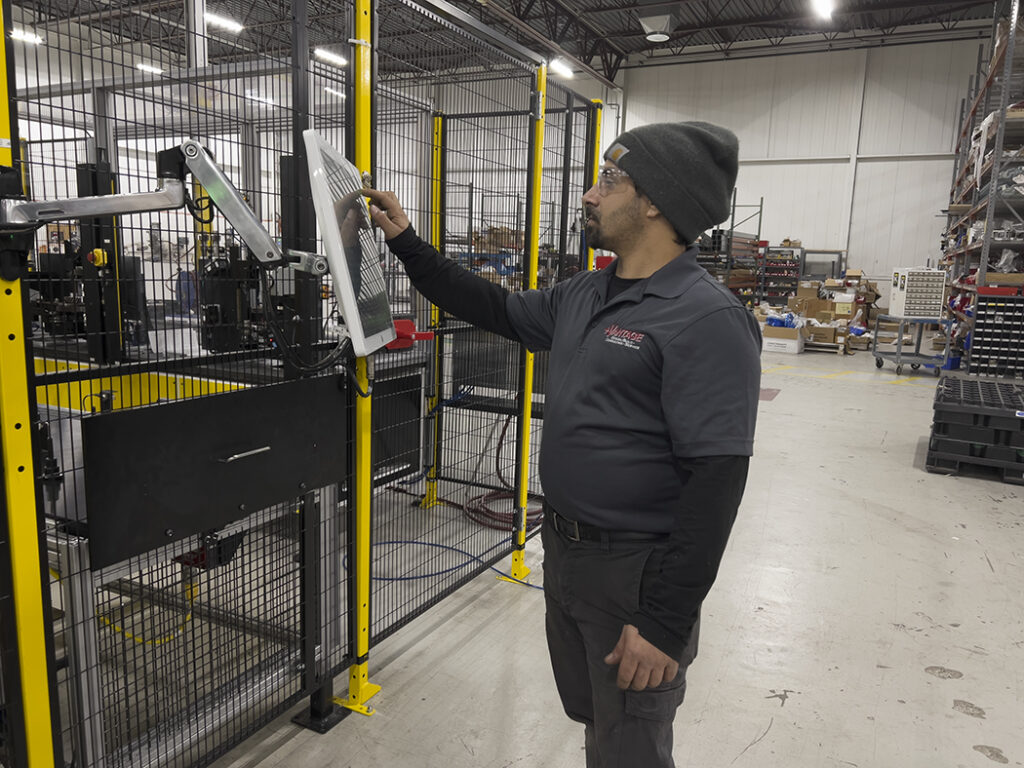 The robotics industry continues to accelerate forward, creating a world where automation is the norm. But as industrial robots and cobots become more common, what does the future of robotics look like?
The robotics industry continues to accelerate forward, creating a world where automation is the norm. But as industrial robots and cobots become more common, what does the future of robotics look like?
Various industries are being shaped by robotic technology and its potential applications, and this is already impacting the way we live and work. Here are some of the most exciting innovations, both current and coming up on the horizon.
Technology Trends in the Future of Robotics
There are a few trends that continue to define and drive the future of robotics.
Addressing Labor Issues with Modern Solutions
Since labor shortages from the pandemic continue to fuel the interest and investment in robotics, robots are being adopted by industries other than manufacturing. Construction, agriculture, and healthcare are all beginning to integrate robotic automation as companies look for a way to meet demand while slashing costs.
Customizing Processes with Collaborative Robots
Cobots are also a trend that has shaped the future of robotics. Instead of outright replacing humans in certain processes, cobots allow humans to continue to do their jobs, but relieves the burden of repetitive motions or dangerous tasks that can result in injury and downtime. These collaborative robots can also supplement small teams or companies with labor shortages to help them meet demand and stay in business.
Robots are also becoming more compatible with each other, as businesses look to increase the value of their robots and minimize their costs. For example, customized robots can complete multiple tasks when a company invests in a single machine, or multiple machines can work together to provide turnkey automation solutions for certain processes.
Creating Control with Smart Workplaces
As the interest in robotics grows, robotics manufacturers are also looking for ways to ease the burden of implementation for companies by developing software programs along with hardware to make deployment and integration simpler.
Another technology trend in robotics that helps companies maximize their investment is predictive maintenance, which is the technology that monitors a robot’s system to determine when maintenance is needed before it causes expensive repairs and downtime.
Automation Robotics in the Factory of the Future
Robots continue to be used for automating processes, so what do automation robots and the factory of the future look like?
Technologies such as drones and autonomous mobile robots (AMRs) have the potential to revolutionize:
- Agriculture, including farming and food production
- Healthcare, including diagnostics, surgery, and patient education
- Logistics, which impacts virtually every industry
- Military applications, such as national security and aircraft
- Security, including commercial, residential, and even cybersecurity
- Transportation, including vehicles and vehicle manufacturing
As robots continue to be utilized in an increasing number of industries, they will become part of our daily lives.
The Benefits of Robotics in the Future
What is the future of robotics? It goes without saying that robotics will change the future of work and the workplace as we know it. As more and more jobs performed by humans can be automated with robots, companies from all industries are seeing the potential of highly integrated workspaces.
As robots continue to become more common in our everyday lives, it’s worth exploring the benefits of robotics in the future to better understand the impact these machines will have on the workplace.
- Robotics allows repetitive or dangerous jobs to be automated, which increases jobs that require a higher level of skill, allowing workers to advance their careers with the potential for earning more.
- Through data collection, robots allow for more informed decision making, which can ultimately improve operational efficiency and reduce downtime, resulting in cost savings for companies.
- Cobots and industrial robots can reduce product damage, increase efficiency, and result in better consistency and performance, which can streamline operations.
- Robots allow companies to reduce wasted time, materials, and money due to the machine’s accuracy, precision, and proficiency.
How Will Robotics Change the World?
Robotics will make it easier for companies to meet demand at a lower cost, which can help reduce the cost of goods.
New machines will also help companies overcome challenges such as labor shortages and supply chain issues. As a result, these problems will become more obsolete with the integration of robotics into manufacturing and automation around the world.
However, robotics will also increase the need for sophisticated and effective cybersecurity, especially as robots can collect and analyze large amounts of data. As cybersecurity requirements become more stringent, companies will need to implement effective practices and programs that prevent the downtime and reputational damage resulting from a breach.
Robots will also change how we work and what jobs are available. This is especially true with cobots, which allow humans and robots to work together. People can expect to adapt to changing work environments that include robots, including more higher-paying jobs that require a more diverse skillset.
Download Your Free eBook
Interested in learning more about the future of robotics in manufacturing? Download your free copy of our eBook about electric vehicle battery assembly and how robotics is changing this industry.
 The robotics industry continues to accelerate forward, creating a world where automation is the norm. But as industrial robots and cobots become more common, what does
The robotics industry continues to accelerate forward, creating a world where automation is the norm. But as industrial robots and cobots become more common, what does